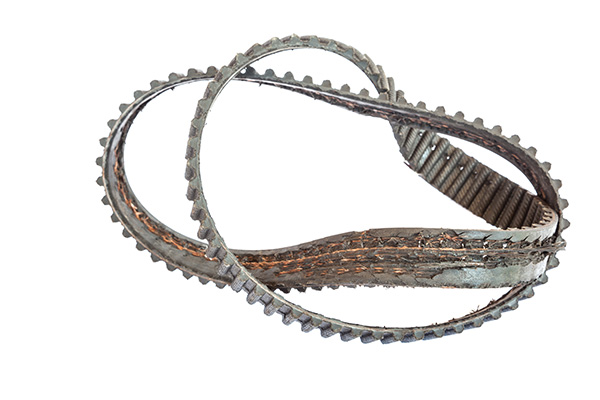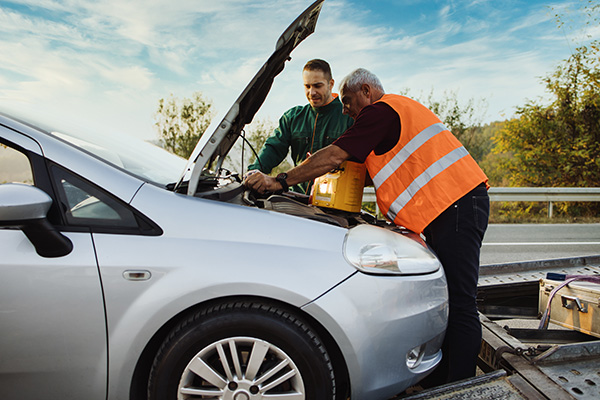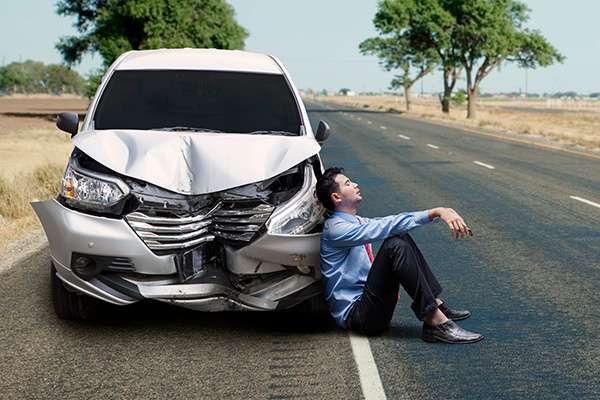Posted on 6/27/2024

The timing belt is a crucial component in your vehicle's engine, yet it's often overlooked until it's too late. So, what really happens if you don't change your timing belt on time? Let's explore the potential consequences and why timely replacement is necessary for your car's health and your wallet. The Role of the Timing Belt The timing belt, also known as the cam belt, is responsible for synchronizing the rotation of the crankshaft and camshaft. This synchronization ensures that the engine's valves open and close at the correct times during each cylinder's intake and exhaust strokes. Without this precise timing, the engine wouldn't run smoothly, and serious damage could occur. Immediate Consequences of a Failed Timing Belt When a timing belt fails, it can cause catastrophic engine damage almost instantly. Unlike other car components that might show gradual wear, timing belts often fail suddenly ... read more
Posted on 5/28/2024

Roadside emergencies can happen to anyone, anywhere, at any time. Whether you're commuting to work or embarking on a cross-country road trip, being prepared for unexpected situations can make all the difference. This article will explore the seven most common roadside emergencies and provide tips on handling them effectively. 1. Flat Tire Perhaps the most common roadside emergency drivers encounter is a flat tire. A flat tire can leave you stranded on the side of the road, whether due to a puncture, a blowout, or gradual deflation. Knowing how to change a tire safely and having the necessary tools on hand is essential for every driver. 2. Dead Battery A dead battery can strike without warning, leaving your vehicle unable to start. This can happen for various reasons, including age, extreme temperatures, or the need to leave lights on overnight. Carrying jumper cables and knowing how to jump-start a vehicle can help you get back on the road quic ... read more
Posted on 4/27/2024

When it comes to safeguarding your vehicle and ensuring a smooth journey on the road, avoiding collision damage is paramount. From fender-benders to more severe accidents, collisions can wreak havoc on both your vehicle and your wallet. 1. Stay Alert and Vigilant Behind the Wheel The first line of defense against collision damage starts with you – the driver. Remain vigilant and attentive while driving, keeping your eyes on the road and your surroundings at all times. Avoid distractions such as texting, eating, or adjusting the radio, as even a momentary lapse in concentration can lead to disaster. By staying alert and focused, you can react quickly to potential hazards and minimize the risk of accidents. 2. Maintain a Safe Following Distance One o ... read more
Posted on 3/29/2024
.jpeg)
Have you ever been driving and suddenly had a warning light on your dashboard, leaving you wondering what's wrong with your car? Car error codes can be confusing and alarming, but understanding the most common ones can help demystify the situation. Seasoned driver or new to the road, knowing how to interpret and address these error codes can save you time, money, and stress. Check Engine Light (P0300) Perhaps the most notorious of all car error codes, the check engine light (CEL) can indicate a wide range of issues with your vehicle. However, one of the most common causes behind a CEL is the P0300 code, which signifies engine misfires. Engine misfires can occur due to various factors, including faulty spark plugs, ignition coils, fuel injectors, or oxygen sensors. When you see the check engine light with a P0300 code, it's essential to address the underlying cause promptly to prevent further damage to your engine and ... read more
Posted on 2/29/2024
.jpeg)
The role of your car's cabin air filter - to keep the air inside your vehicle clean and fresh. However, over time, cabin air filters can become clogged with debris, reducing their effectiveness and compromising your driving experience. What is a Cabin Air Filter The cabin air filter is located inside the HVAC (heating, ventilation, and air conditioning) system and is responsible for filtering the air that enters the interior of your vehicle. It traps dust, pollen, pollutants, and other contaminants, preventing them from circulating through the cabin and affecting your health and comfort. Signs That Your Cabin Air Filter Needs Replacement Reduced Airflow If you notice that the airflow from your vehicle's vents has decreased, it could indicate a clogged cabin air filter. Reduced airflow means that less air is passing through the filter, resulting in diminished cooling or heating performance. Unpleasant Odors A musty or moldy odor inside the car is a common sign of a dirty ... read more